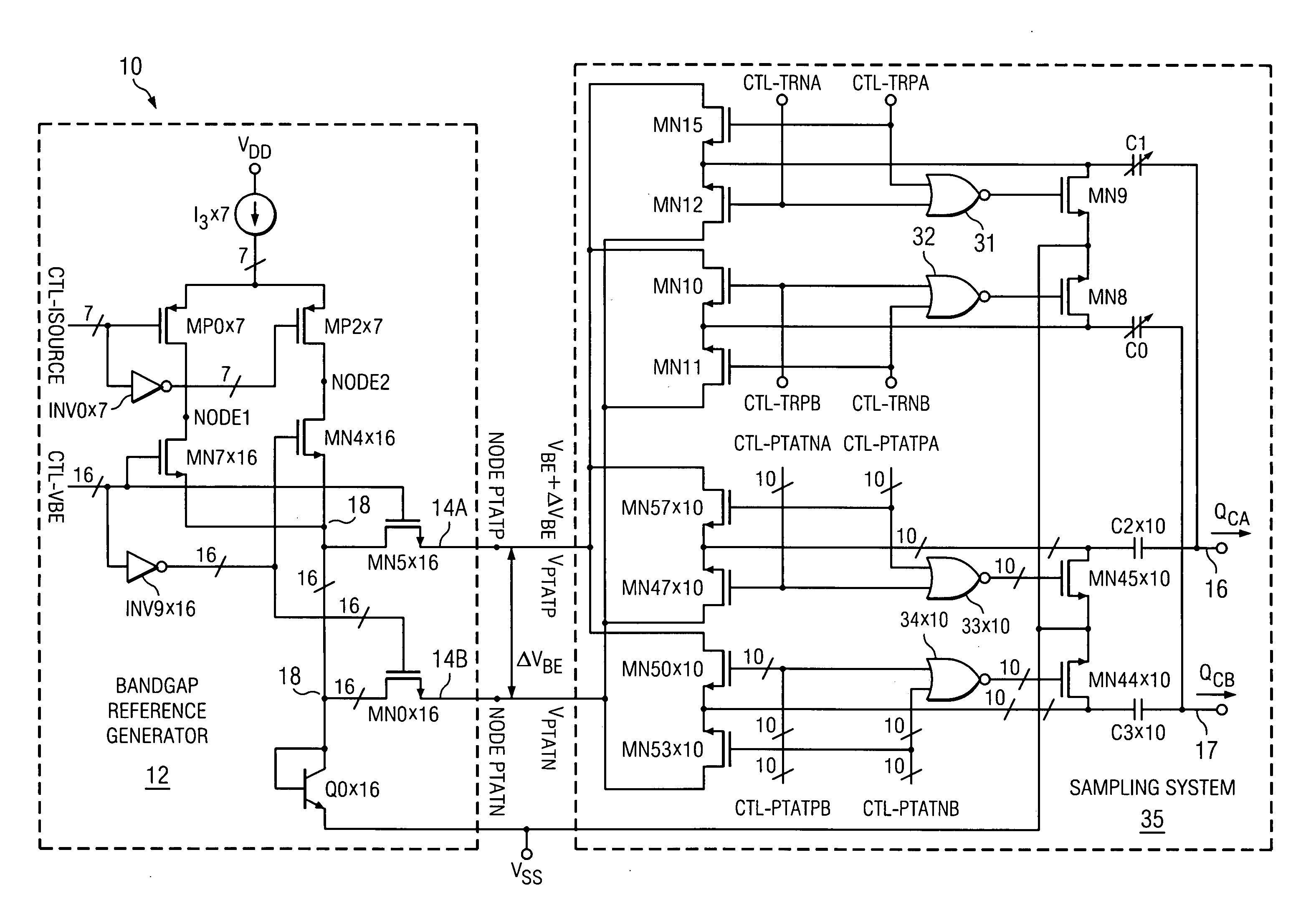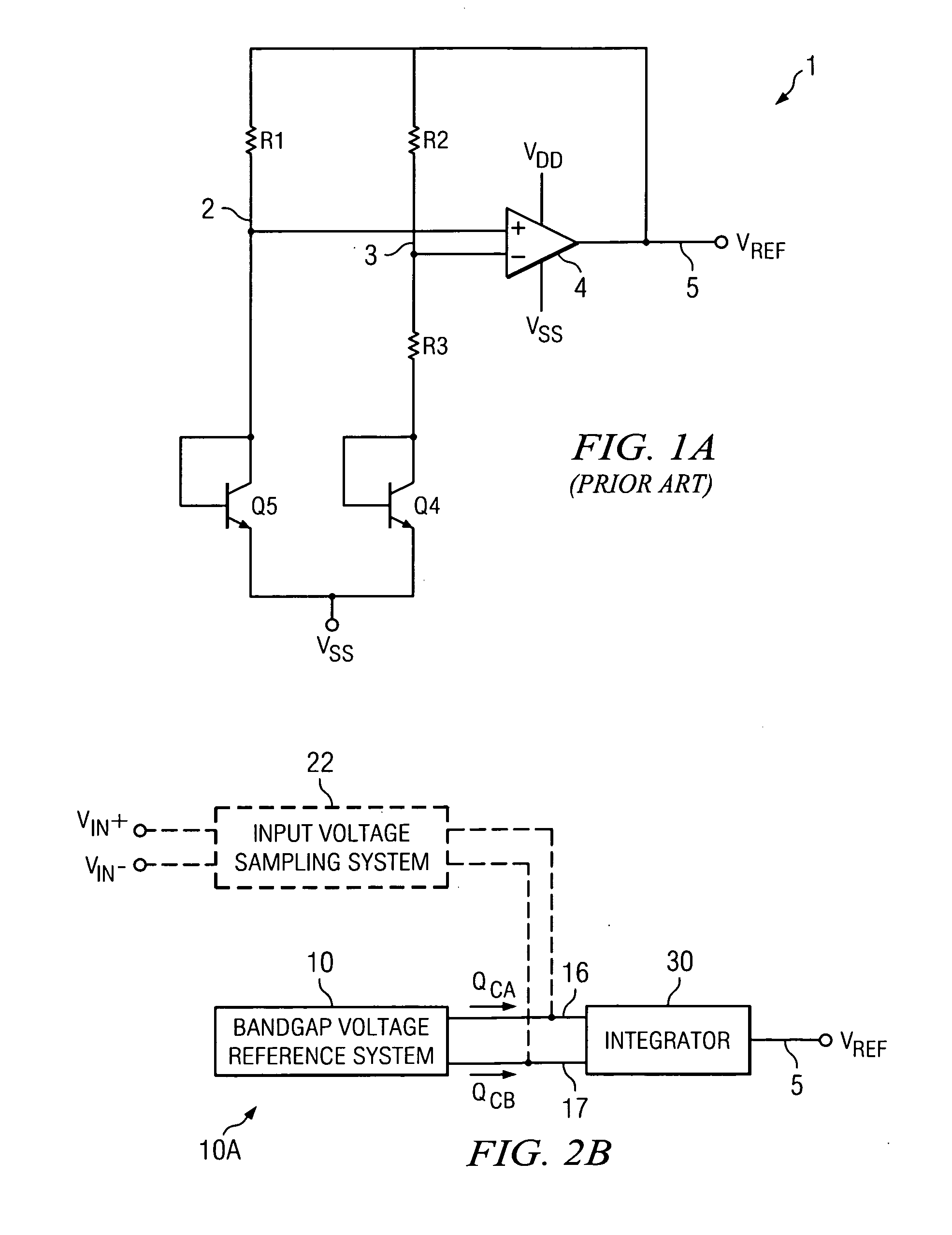Bandgap reference circuit and method
a reference circuit and band gap technology, applied in the field of band gap reference voltage circuits, can solve the problems of reducing the value of vsub>be /sub>voltage, wide chip-to-chip variation, and poor long-term stability of conventional band gap reference circuits such as the one in prior art fig. 1a, so as to reduce random chip-to-chip variation in a band gap reference voltage
- Summary
- Abstract
- Description
- Claims
- Application Information
AI Technical Summary
Benefits of technology
Problems solved by technology
Method used
Image
Examples
Embodiment Construction
[0050]Structure of FIG. 2A, block 12
[0051]FIG. 2A shows a bandgap voltage reference system 10 with dynamic element matching to reduce circuit inaccuracy due to normal variations in parameters of various circuit components. Voltage reference system 10 includes a bandgap reference generator circuit 12, the output of which is coupled to a dynamic sampling system 35. In this example, reference generator circuit 12 includes M=7 identical current sources I3, collectively designated “I3×7”. Each of the 7 current sources I3 has one terminal connected to VDD and another terminal connected to the source of a corresponding P-channel transistor MP0 and also to the source of another corresponding P-channel transistor MP2. The 7 transistors MP0 are collectively designated “MP0×7”, and the 7 transistors MP2 are collectively designated “MP2×7”. The gates of transistors MP0×7 are connected to the 7 conductors, respectively, of a bus which conducts the M=7 bits of a digital control signal CTL-ISOURCE...
PUM
 Login to View More
Login to View More Abstract
Description
Claims
Application Information
 Login to View More
Login to View More - R&D
- Intellectual Property
- Life Sciences
- Materials
- Tech Scout
- Unparalleled Data Quality
- Higher Quality Content
- 60% Fewer Hallucinations
Browse by: Latest US Patents, China's latest patents, Technical Efficacy Thesaurus, Application Domain, Technology Topic, Popular Technical Reports.
© 2025 PatSnap. All rights reserved.Legal|Privacy policy|Modern Slavery Act Transparency Statement|Sitemap|About US| Contact US: help@patsnap.com



